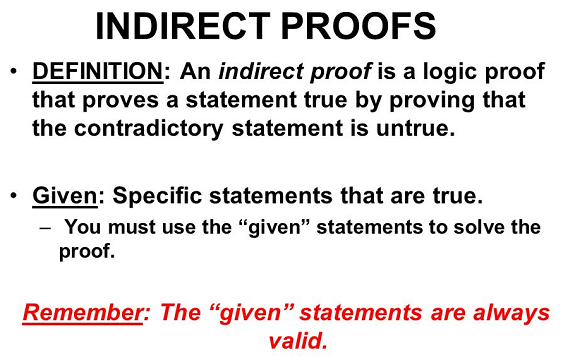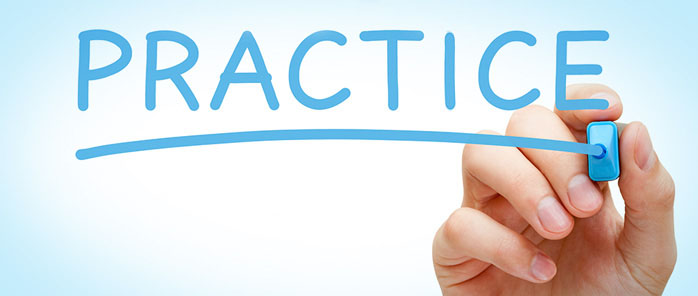Unit 5 Lesson 5 Indirect Proof
Unit 5 Lesson 5: Indirect Proof

Lesson Overview
Isosceles Triangle Theorem
What You Will Learn
- how to use indirect reasoning, or a process of elimination, to arrive at a conclusion
- all possibilities are considered, and then all but one are proven false
Additional Resources
Overview
In this lesson, you will learn you can conclude that a square must contain a certain number if you can eliminate the other three numbers as possibilities. This type of reasoning is called indirect reasoning. In indirect reasoning, all possibilities are considered, and all but one are proved false. The remaining possibility must be genuine.
Essential Understanding
You can use indirect reasoning as another method of proof. A proof involving indirect reasoning is an indirect proof. In indirect proof, a statement and its negation are often the only possibilities. When you see that one of these possibilities leads to a conclusion that contradicts a fact you know to be accurate, you can eliminate that possibility. For this reason, indirect proof is sometimes called proof by contradiction.
Key Concepts
Writing an Indirect Proof
- Step 1: State as a temporary assumption the opposite (negation) of what you want to prove.
- Step 2: Show that this temporary assumption leads to a contradiction.
- Step 3: Conclude that the temporary assumption and what you want to prove must be valid.
Lesson 5: Indirect Proof
Proceed to the Next Page
Prepare for Application
Instructions
You have now studied Indirect Proof. It is now time to demonstrate your learning.
Try the activities below on your own. You should be able to answer these before beginning the practice.
Create an extra journal called 'Unit 5: Lesson 5 activities' and do these in your journal.
Activity 1
Use the figure below for questions 1-2.
- Suppose you want to write an indirect proof of each statement. As the first step of the proof, what would you assume?
- It is not acute.
- At least one pair of shoes you bought cost more than $25.
Activity 2
1. Which two statements contradict each other?
- Is acute.
- is scalene.
- is equiangular.
2. Statements I and II below contradict each other. Statement III is the negation of Statement I. Are Statements II and III equivalent? Explain your reasoning.
- is scalene.
- is equilateral.
- is not scalene.
Activity 3
Given: 7(x + y) = 70 and x ≠ 4.
Prove: y ≠ 6



